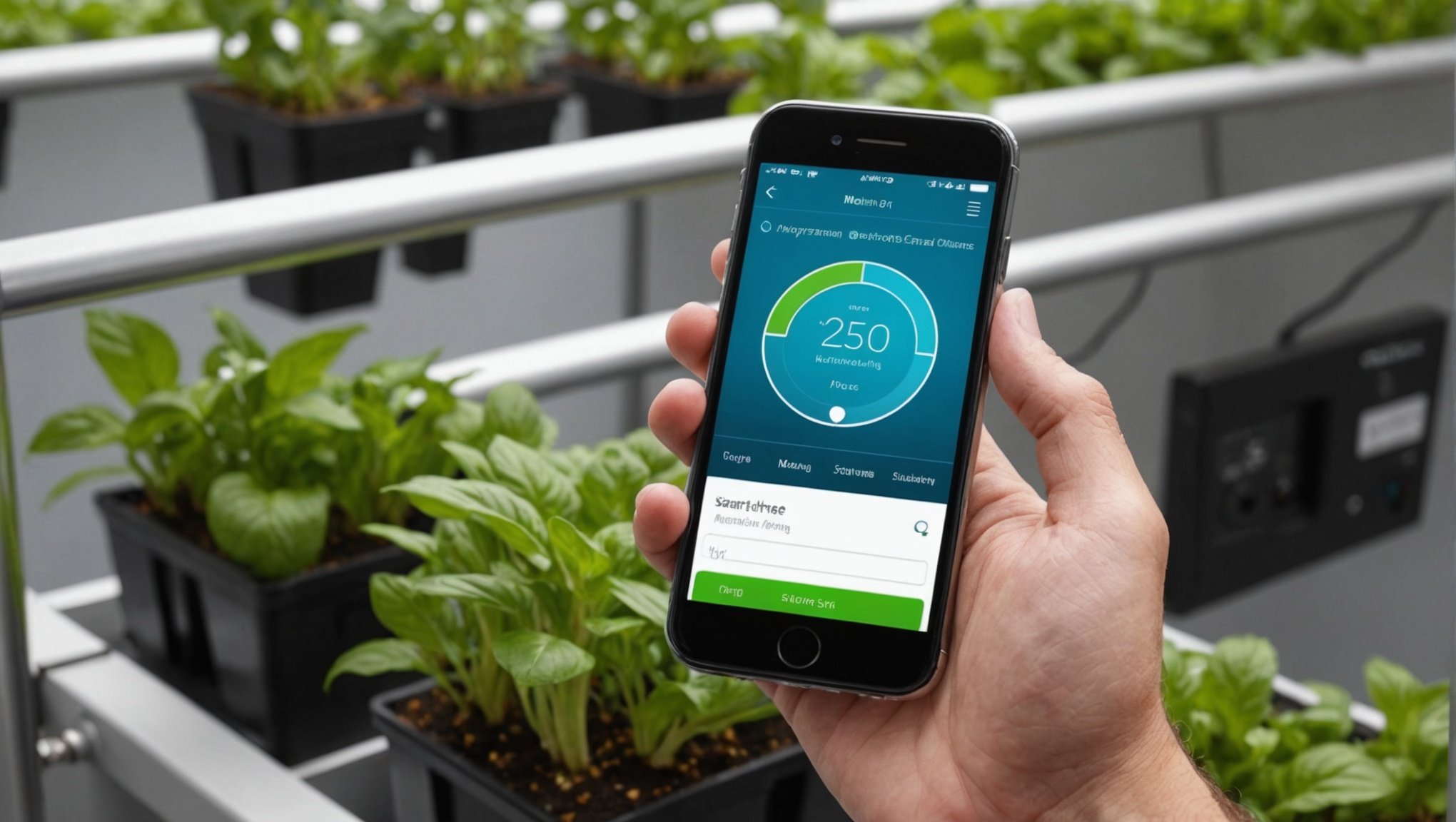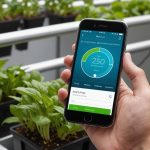In today’s rapidly advancing tech landscape, the concept of a smart home is no longer a futuristic dream but a tangible reality. The integration of smart devices and automation is transforming our living spaces into hubs of efficiency and convenience. One of the most intriguing applications of this technology is the incorporation of hydroponics systems into smart homes. Hydroponics, the method of growing plants without soil by using mineral nutrient solutions, has gained immense popularity due to its efficiency and versatility. But can you use your smartphone to control smart home hydroponics systems? The answer is a resounding yes, and in this article, we delve into the hows and whys of this innovative practice.
The Rise of Smart Hydroponics Systems
The integration of smartphones and smart home technology into hydroponics systems represents a significant leap forward. Hydroponics, which has been traditionally managed through manual adjustments and regular monitoring, is now benefiting from the seamless connectivity and automation provided by smart home technology.
In parallel : What Are the Best Practices for Using Your Smartphone as a Digital Nomad?
Smart hydroponics systems can be controlled through smartphones, enabling monitoring and adjustments in real-time. These systems often come equipped with sensors that track environmental factors such as light, humidity, temperature, and nutrient levels. The data collected by these sensors can be accessed and analyzed via smartphone apps, allowing for precise adjustments to ensure optimal plant growth.
Imagine being able to adjust the nutrient solution concentration or tweak the lighting schedule from the convenience of your phone, even when you’re miles away from home. This level of control not only maximizes efficiency but also significantly reduces the margin for error, leading to healthier, more productive plants.
Have you seen this : How to Set Up a Smart Greenhouse Using Your Smartphone?
How Smartphones Enhance Hydroponic Systems
Smartphones have revolutionized how we interact with our smart home devices, and hydroponics systems are no exception. The integration of smartphone technology into these systems brings a myriad of benefits that can streamline and enhance plant cultivation.
Remote Monitoring and Control
One of the most significant advantages of using smartphones with smart home hydroponics systems is the ability to monitor and control the system remotely. Modern hydroponics systems are equipped with a range of sensors that collect real-time data on various parameters. This data can be transmitted to a smartphone app, providing users with a comprehensive overview of the system’s status.
For instance, you can monitor the pH levels, nutrient concentration, and water temperature from anywhere in the world. If any of these parameters fall outside the optimal range, you can make immediate adjustments through the app. This remote control capability ensures that your plants receive the best care, regardless of your physical location.
Automated Adjustments
Automation is at the core of smart home technology, and it plays a crucial role in hydroponics systems as well. Through smartphone apps, you can set up automated schedules for watering, nutrient delivery, and lighting. These schedules can be customized based on the specific needs of your plants, ensuring they receive the right amount of nutrients, water, and light at the right time.
Moreover, the integration of artificial intelligence (AI) and machine learning algorithms can enhance automation. These technologies can analyze historical data and make predictive adjustments to optimize plant growth. For example, the system can adjust the nutrient solution concentration based on the growth stage of the plants or change the light intensity to mimic natural sunlight patterns.
Real-Time Alerts and Notifications
Another invaluable feature of smart home hydroponics systems is real-time alerts and notifications. If any critical parameter deviates from the desired range, the system can send instant alerts to your smartphone. This allows you to take immediate corrective action, preventing potential issues from escalating.
For example, if the water pump malfunctions or the nutrient solution levels drop too low, you’ll receive an alert on your phone. This proactive approach minimizes the risk of plant stress and ensures a consistently healthy growing environment.
Smart Home Integration: Beyond Hydroponics
While the primary focus of this article is the control of hydroponics systems via smartphones, it’s essential to recognize the broader context of smart home integration. The same technology that enables remote monitoring and control of hydroponics systems can be extended to other aspects of smart home automation.
Seamless Ecosystem
Smart home technology thrives on creating a seamless ecosystem where various devices and systems work together harmoniously. By integrating your hydroponics system with other smart home devices, you can achieve a higher level of automation and efficiency.
For instance, you can synchronize your hydroponics system with smart thermostats, humidity sensors, and ventilation systems. This ensures that the environmental conditions within your home are consistently optimized for plant growth. Additionally, voice assistants like Amazon Alexa or Google Assistant can be used to control the hydroponics system through voice commands, further enhancing convenience.
Energy Efficiency
Smart home technology also promotes energy efficiency, which is crucial for both environmental sustainability and cost savings. By using smartphones to monitor and control hydroponics systems, you can optimize energy usage and reduce wastage.
For example, you can schedule the lighting to follow a natural daylight cycle, reducing the need for artificial light during peak sunlight hours. Similarly, automated watering schedules can prevent overwatering, conserving water resources.
Enhanced User Experience
The integration of smartphones into smart home hydroponics systems enhances the overall user experience. The intuitive interfaces of smartphone apps make it easy for users to interact with and control their systems. Whether you’re a seasoned gardener or a beginner, the user-friendly design of these apps ensures that you can navigate and utilize the features effectively.
Furthermore, the convenience of having all control functionalities in one place, accessible through your smartphone, simplifies the management of your hydroponics system. This streamlined experience allows you to focus more on enjoying the benefits of homegrown produce and less on the technicalities of system management.
The Future of Smartphone-Controlled Hydroponics
As technology continues to evolve, the future of smartphone-controlled hydroponics systems looks promising. Innovations in connectivity, data analytics, and automation will drive further advancements, making these systems even more efficient and user-friendly.
Integration with IoT
The Internet of Things (IoT) is at the forefront of smart home technology, and its integration with hydroponics systems is set to revolutionize the industry. IoT enables seamless communication between devices, allowing for more sophisticated automation and control.
With IoT-enabled hydroponics systems, you can expect even greater levels of data integration and analysis. Sensors embedded within the system can collect vast amounts of data, which can be processed using advanced algorithms to provide actionable insights. These insights can help you make informed decisions about plant care, leading to higher yields and better-quality produce.
Advanced AI and Machine Learning
Artificial intelligence and machine learning are poised to play a pivotal role in the future of hydroponics. These technologies can analyze historical data and learn from patterns to optimize system performance. For example, AI algorithms can predict nutrient requirements based on plant growth stages and adjust the nutrient solution accordingly.
Machine learning can also enhance pest and disease detection. By analyzing images and data collected through sensors, AI can identify early signs of plant diseases or pest infestations and alert you to take preventive measures.
Sustainable Practices
Sustainability is a key focus in modern agriculture, and hydroponics is inherently more sustainable than traditional soil-based farming. The integration of smart technology further enhances sustainability by optimizing resource usage and minimizing waste.
For example, automated watering schedules can prevent overuse of water, while precise nutrient delivery reduces the risk of nutrient runoff. Additionally, the ability to monitor and control the system remotely reduces the need for physical interventions, saving time and energy.
In conclusion, the integration of smartphones into smart home hydroponics systems represents a remarkable advancement in modern agriculture. The ability to remotely monitor, control, and automate various aspects of hydroponics through smartphone apps provides users with unparalleled convenience and efficiency. From real-time alerts to data-driven adjustments, smartphones empower users to cultivate healthier, more productive plants.
As we look to the future, the synergy between smartphone technology and hydroponics will continue to evolve, driven by advancements in IoT, AI, and sustainability practices. This innovative approach not only enhances the overall user experience but also contributes to a more sustainable and efficient way of growing plants. So, if you’re considering setting up a hydroponics system in your smart home, rest assured that your smartphone can be a powerful tool in achieving optimal results.











